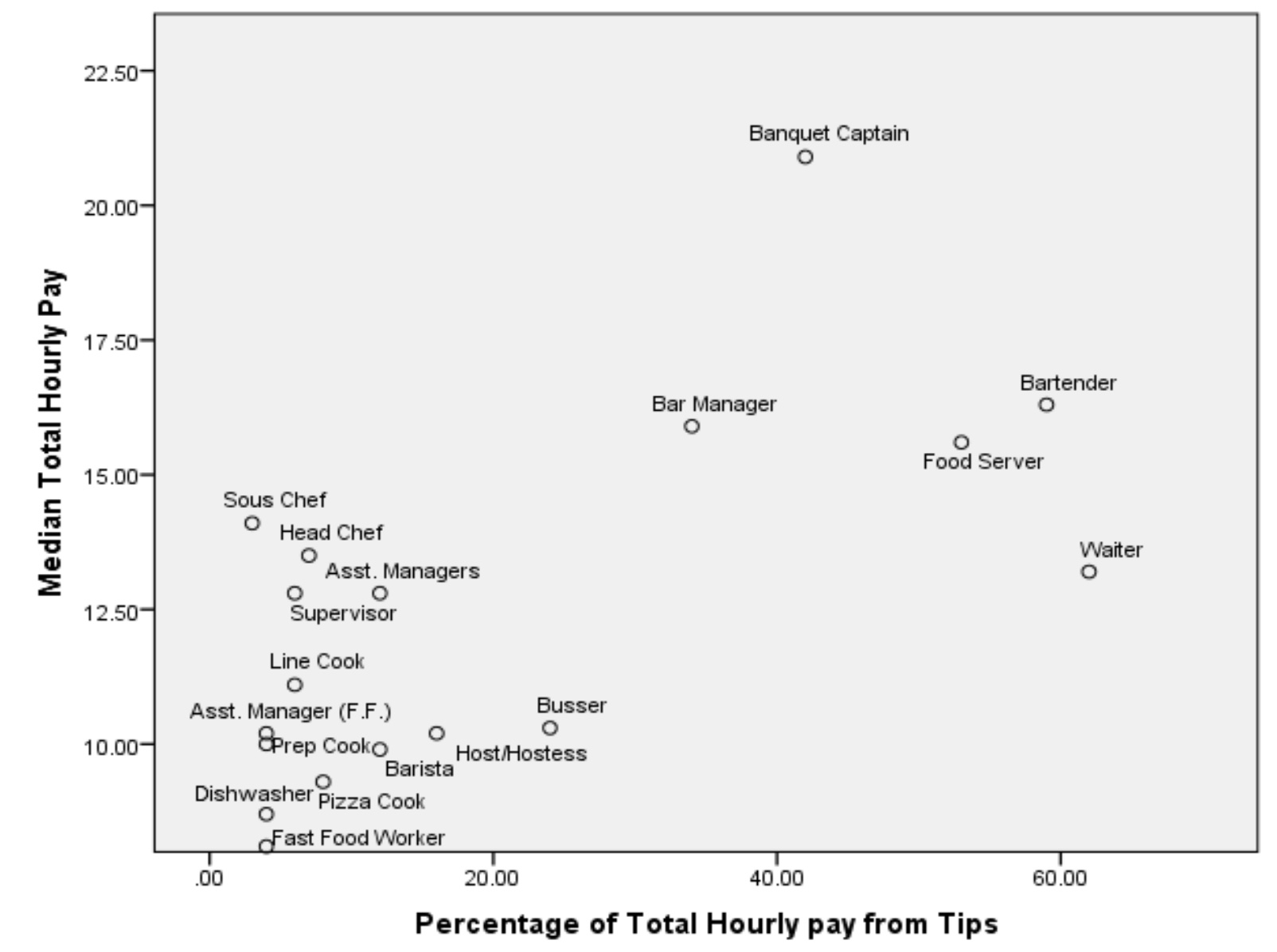Tip Optional
Tips Don't Need To Be MandatoryPrairie Dog Brewing is on a mission to change our industry by proving that a restaurant can thrive without depending on traditional hospitality labour practices, like tip outs or shift-based tip pools, and especially without tips being expected (effectively mandatory tipping). We are a tip-optional establishment and our guests are under no obligation to reflexively tip their server a percentage of the bill. Instead, we invite guests to tip if and when they want to reward our team based on the quality of the overall experience. We pay our team wages that are tied to individual performance and impact. All our employees equally share the tips left behind by our happy guests through biweekly Staff Fund tip pool disbursement, which you can read more about later in this article (if you want a deep dive).
How We Handle Tips
We Do Invite and Accept Tips
First, let’s be clear that tips are both accepted and very much appreciated at Prairie Dog Brewing, where tips remain an important factor in our overall team compensation strategy. However, we don’t expect people to tip a percentage on their bill as a matter of obligation or rule, and we have a very different approach to how we distribute those tips to our team members, compared with how other restaurants do this. When we hand guests a payment terminal, it allows the option of no tip at all, to enter a custom tip ($ or %), or to select from a few convenient pre-set percentages.
Staff Fund Tip Distribution
When a guest leaves a tip at our establishment, either through our debit machines, as cash left on the table, or online with a takeout/delivery partner, those tips are pooled together by our finance team on a daily basis and added to our Staff Fund. We use a spreadsheet to track daily staff fund collection from our various income sources. The staff fund is a tip pool, by legal definition, so we track it as a liability (money owed to our team) on our books. The current balance of our Staff Fund tip pool is always present on our financial statements, similar to the way all our accounts payables are tracked (as money owed to our team).
Every 2 weeks, as we process payroll, we use our time punch system and staff fund spreadsheet to sum up all the hours worked by our non-owner team members during the period associated with payroll. We then dispense out 100% of the staff funds collected during that same two weeks, in a pro-rata fashion based on the hours worked by each team member. This dispensation happens as a separate, taxable line item on every employee’s biweekly pay stub. Because Staff Fund income is properly reported to the CRA and taxed, our team members are readily able to apply it towards financing mortgages and car purchases, whereas people who regularly receive tips as cash, such as through daily tip outs, often fail to track and report this income.
Now for an example. Let’s say we brought in $12,000 in staff funds for a period in which 1,200 total hours were worked by our team. Every hour worked by a team member would earn them $10 in staff funds per hour worked during this period ($12,000/1,200 hours). A full-time team member that worked 80 hours would receive an extra $800 on their paycheque (pre-tax), which works out to 6.7% of the total funds collected.
The best part is that even our dishwashers and our bussers, who start out at with a minimum wage, still earn staff funds at the same rate as everyone else, so our team wide average pay rate is already in the mid $20’s per hour (we aren’t at $10/hr in staff funds yet, but we are on track to get there soon).
At Prairie Dog Brewing, we succeed together as a team. We don’t just call ourselves a team because that sounds good on job postings. We support each other and jump into each other’s sections to help one another out. When we hear a glass fall in the dining room, everyone jumps to grab the mop and broom. We have each other’s backs. Therefore, aside from our owners, everyone on our team partakes equally in the reward of our staff funds/tips.
Now that you understand how our model works, let’s compare it with how other hospitality businesses handle compensation, in the section below.
Like what you’re reading? If you have more time, you should check out this Eater article, which does a great job of summarizing the no tipping approaches US restaurateurs have tried out and why it isn’t working for many of them.
How They Handle Tips
Typical Tip-Based Compensation
Most restaurants and bars pay their service staff minimum wage (or sometimes, no base wage at all), then use tips on top of those wages to further compensate them. You can think of service staff in tip-oriented establishments as commissioned salespeople, where tips comprise anywhere from 50% to 100% of a service worker’s income. In this type of environment, service workers tend to think of tips as their main source of income, and indeed, there are many people out there who work solely for tips (illegally, but not uncommon).
The way tips are split up can really vary, with tip outs and tip pools being the two prevailing strategies, discussed below. A handful of restaurants still allow servers and bartenders to walk away with 100% of the tips they collected each shift, but this is quite rare.
A visual representation of typical wage distribution in American tip-expected hospitality establishments, where median pay is charted against how much of that pay was based on tips. Servers, bartenders and waiters are clear outliers on the top end of pay scales, even though they are often paid well below minimum wage (most US states have different minimum wages for liquor servers). This disparity is far greater in places where there is no separate minimum wage for tipped liquor servers (like Alberta!), where kitchen and support staff often receive much less income compared to servers and batenders.
Chart prepared by Michael Lynn with data from payscale.com.
Tip Outs
Many establishments use a “tip out” formula to split tips between the people who worked that shift. At the end of each shift, each server’s sales are added up, and they are expected to pay a mandatory “tip out”, which is calculated as a percentage of their gross sales, and paid to the rest of the tip-eligible team members in a hierarchical fashion, ie. 5% to bartenders, 5% to the kitchen, 2% to bussing staff and hosts. The tip out is usually paid by each server using the tips they collected during that shift, but on days where a server only has a small number of bills, and especially where a few guests tipped poorly on their bills, the total tips collected by the server may be less than the cost of their tip out, so the server is expected to pay their coworkers out of their own pocket!
Since a lot of servers simply don’t have the cash to pay their portion of tip outs on bad days, many restaurants implement an accounts receivable system where they accumulate server debts over time and subtract them from either future tip outs or deduct them from employee payroll to make the rest of the team whole. This is a really terrible situation to be in if you work at a restaurant/bar that is slowing down (where it might take a couple of weeks to make up for one bad night), or where menu prices are very high and a small number of guests contribute to most of the sales, because it only takes one bad table experience to put a server in substantial debt. These are usually the restaurants that we hear stories about on social media, where servers are observed berating their guests for leaving a small tip. Yikes!
See this Reddit thread and its comments for a perspective on people’s first experiences with tip outs and gender biases at a popular Calgary summer exhibition.
Tip Pools
Tip pools are similar to tip outs because they aim to share the tips across staff in non-serving roles, like hosts, bussers, kitchen team members, etc., but instead of splitting each server’s tips as a percentage of their sales, all tips for the day (or shift) are pooled together and subsequently dispensed based on some combination of hours worked, fixed percentages of tips earned, or flat dollar amounts for supporting roles. This may be as simple as saying, “managers get 50%, bartenders get 25%, kitchen gets 5%, hosts get $10, servers take home the rest”. Tip pools can quickly run into trouble, though, such as when some staff only work during slower times of the day, so General Managers often try to tailor their methods to ensure a “fairer” distribution, by some definition of fair.
Legal Consequences
As you can probably imagine, there is no shortage of opportunities for things to go wrong with both tip outs and tip pools, and they generally require a great deal of tracking on the part of management. This tracking and distribution often lacks transparency – to the staff who generated the tips through their sales, to the staff receiving tips in tip outs and pools, and to the Canada Revenue Agency (CRA), who is supposed to track income and ensure taxes are paid. It also leads to power dynamics and toxic cultures in many restaurants, all of which we’ll discuss below.
So far, we haven’t heard of many cases of employees suing their employers for failure to properly track and distribute tips, but that could easily be due to legal reasons (such as non-disclosure clauses in settlements), fear (of reprisal, its a small world and nobody wants to be blacklisted), and/or the lack of visibility and easy accounting for tips in older paper-based cash systems that were the standard until very recently. However, with electronic tipping now dominating over paper-based cash, and tip recording well supported by modern point of sale systems, it has never been easier to do the math. That said, the industry continues to be rife with stories about managers “stealing tips” which, whether true or not, points to the lack of transparency and trust between restaurant staff and their managers under traditional tipping models, where tips are such a crucial part of people’s income.
Additionally, both tip outs and traditional tip pools have the potential to require a lot of time as team members wait to have the data collection and math done by their managers, or for those managers to pay employee tips at the end (or start of) their shifts. In every case that we’ve heard of (and we hear a lot during interviews and whatnot), this is always unpaid time. Alberta labour standards prohibit asking employees to sit and wait on their employer without being paid for it, but labour standards of all kinds are casually disregarded in most restaurants. While again, there is fear of being blacklisted, employees are increasingly aware of their rights and we expect restaurants to see more labour complaints arising from these sorts of failures to respect their team members’ time, adding more reasons for restaurants to consider paying tips electronically on payroll.
Speaking of payroll, taxation of tips is a huge area of restaurant legal liability. Legally, all tips collected and redistributed through pools (also, all tips collected and distributed electronically) need to be reported as taxable income/EI/CPP-insurable earnings on employee pay stubs, which both ups the stakes and increases the burden of tracking tips. From what we hear, most restaurants shirk the legal responsibility to report and tax tips, and the CRA doesn’t appear to be doing much to hold restaurants accountable for that (there are exceptions – also check out this recent landmark case). Restaurants aren’t ducking the responsibility to report tip-based income because they want their team members to earn more take-home pay; rather, it’s because the restaurant is required to pay higher contributions to EI/CPP than the employees do, so for every dollar the employee would lose to CPP/EI, the restaurant would lose more, and the amounts are going up nearly every year.
Prairie Dog Brewing reports tips as taxable income and deducts CPP/EI as part of regular payroll, and we make our employer contributions to the Canada pension plan and employment insurance not just out of legal obligation, but because we are ethically responsible Canadians who want to see those programs flourish and pay for our own retirement or take our friends, family and team members through hard times. It’s not like the restaurant industry wasn’t hard-hit recently by a plague that resulted in most restaurant workers having to lean heavily on the EI program to survive… we should do our part as restaurants, no?
Finally, tips can be the single largest source of conflict and drama in establishments where tips make up a majority of individual compensation for servers and bartenders. This causes people to fight over the best shifts (for tipping), to fight over the best table sections (for tipping), to fight over who will help out guests when someone goes on break, to skip taking well-deserved breaks because they don’t trust colleagues not to “steal” their tips, etc. It also increases the balance of power in favour of supervisors and mangers, who control all of these things. Some managers may intimidate and even use their power over tips as a mechanism for control and manipulation of young, vulnerable/at-risk subordinates. It’s difficult to say for certain, but we would guess that a great deal of employee turnover, sexual harassment claims and other employer-employee disputes in restaurants are, if not directly caused by, at least heavily influenced by restaurant tip culture and the power dynamics that result from it. These conflicts can pose immense costs to the restaurant over time.
So why go to all this trouble? Is it because tipping actually works to reward the best service? It might be time for a reality check.
Tip Expected Doesn’t Make for Better Service!
The Public Perception of Tipping Is Based On A False Narrative
When reading our occasional negative guest reviews, our tip-optional philosophy has often received too much blame for our failures. We are not alone in this, many US restaurants have experienced the same trend in reviews after changing tipping models. As North Americans, we were indoctrinated to believe that tips act an incentive for servers to provide great service. When we dine at a restaurant that isn’t expecting a tip, or where service is included in menu pricing (ours isn’t), we observe that entire experience with a more critical eye simply because something is different, inferring links between service issues and the restaurant’s tipping policy that may not actually exist.
Throughout the following discussion, we talk about several key ways that this tipping narrative is flawed, but it’s best to keep in mind that much of our planet operates just fine without any tipping, including plenty of Michelin star restaurants. Tipping a person in other countries might even be seen as pompous and offensive, because that part of the world understands the underlying paternalism that perpetuates the North American tipping model, which also has deep roots in slavery and racism.
Several key reasons why the tipping narrative is flawed are found below, but first we need to address our negative reviewers’ concern. No, the fact that your beer wasn’t refilled instantly or that you had to wait to pay your bill was not related to our tip optional approach. In fact, most of our service issues come down to 2 things — either that we were short handed at the time, or that we have human beings on our team who are continuously learning their craft and occasionally have a bad day.
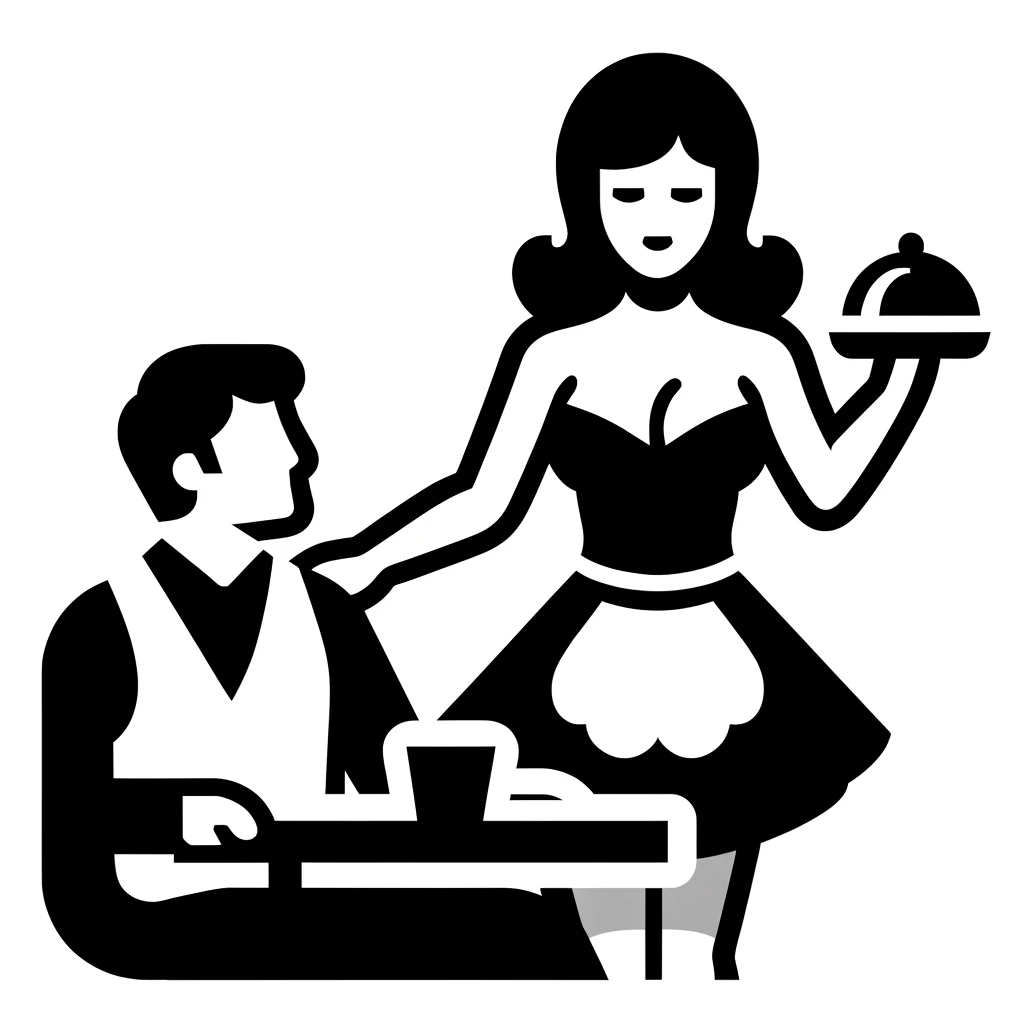
Service Is A Small Factor, At Best
The assertion that tips reward the “best” servers for the quality and promptness of their service is laughable, and this is a well known fact within the ownership side of our industry. Studies have repeatedly found that service has only a small impact (2-4%) on average tipping rates in tip-expected establishments, whereas things like gender (both of guest and of server), physical appearance (including sexualized uniforms), and flirting have a much greater impact. In an establishment like Prairie Dog Brewing, we believe tipping rates are a reasonably good indicator of our overall team’s performance, but still not very indicative an individual server’s abilities (quality of service can be impacted by so many things that a server has no influence over), so we use tips as a reward for our entire team to share in equally (as a per hour amount with our Staff Fund), rather than individually.
Read this 2013 research paper for an extensive analysis of the factors affecting tipping behaviour in restaurants.
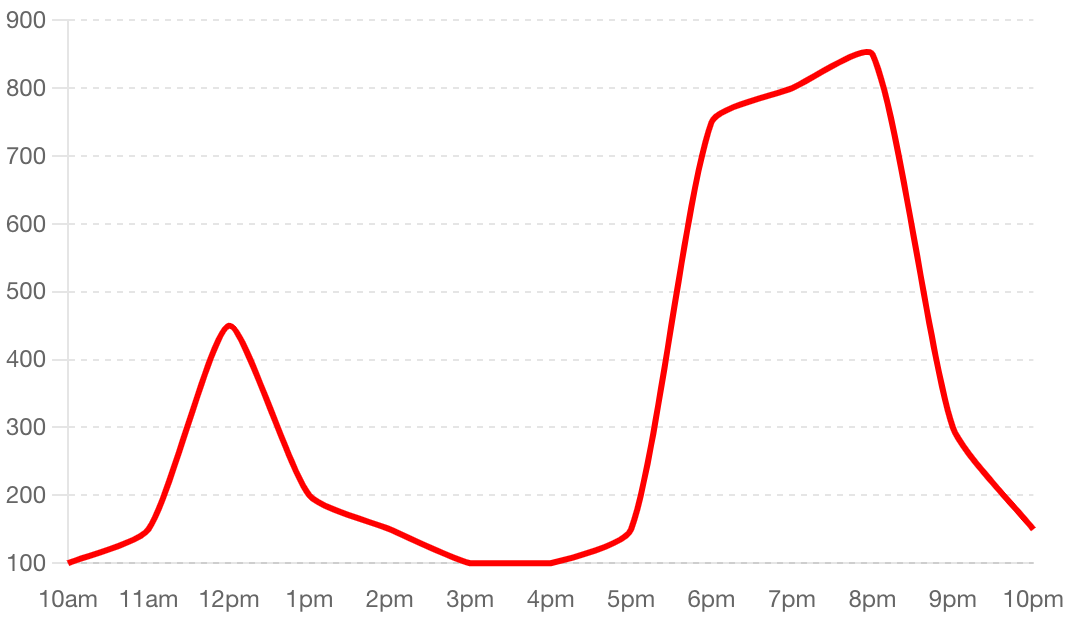
Tip Earning Rates Are Influenced by Time Of Day
The vast majority of the tips earned by a server are simply a function of how busy the restaurant was at the time they were scheduled (how many tables they took payments for), and the time of day they worked (eg. people spend a lot more at dinner time than at lunch time). Team members who work on busy nights earn the most, except on rare occasions where a daytime guest leaves an unusually large tip.
What about the people who work during traditionally slow times or at times where average spends are lower? Weekday daytime servers are often expected to set up the restaurant, then handle a short, albeit intense lunch rush, then spend the remainder of their afternoon answering the phone and door, cleaning the restaurant and preparing it for dinner services and events, pouring their own drinks from the bar for the guests that come in for happy hour, and expediting food for tables and delivery drivers, often with little supervision or backup from other teammates, and with fewer opportunities for uninterrupted breaks. Why should this superior multitasker, who knows how to do all these jobs well enough to work unsupervised, earn far less per hour than a colleague who is regularly scheduled for a single role on busy nights with higher average spends by guests, who also has 10 other staff to back them up on the floor?
Moreover, chances are high that a daytime server works those hours because they have a family to take care of on evenings and weekends, whereas the Friday night servers are often young, single people without dependents. Recognizing that our team members are human beings, we aim to set them up to succeed based on their individual talents and needs, then reward their individual ability and impact directly through wages, as the foundation behind our model.
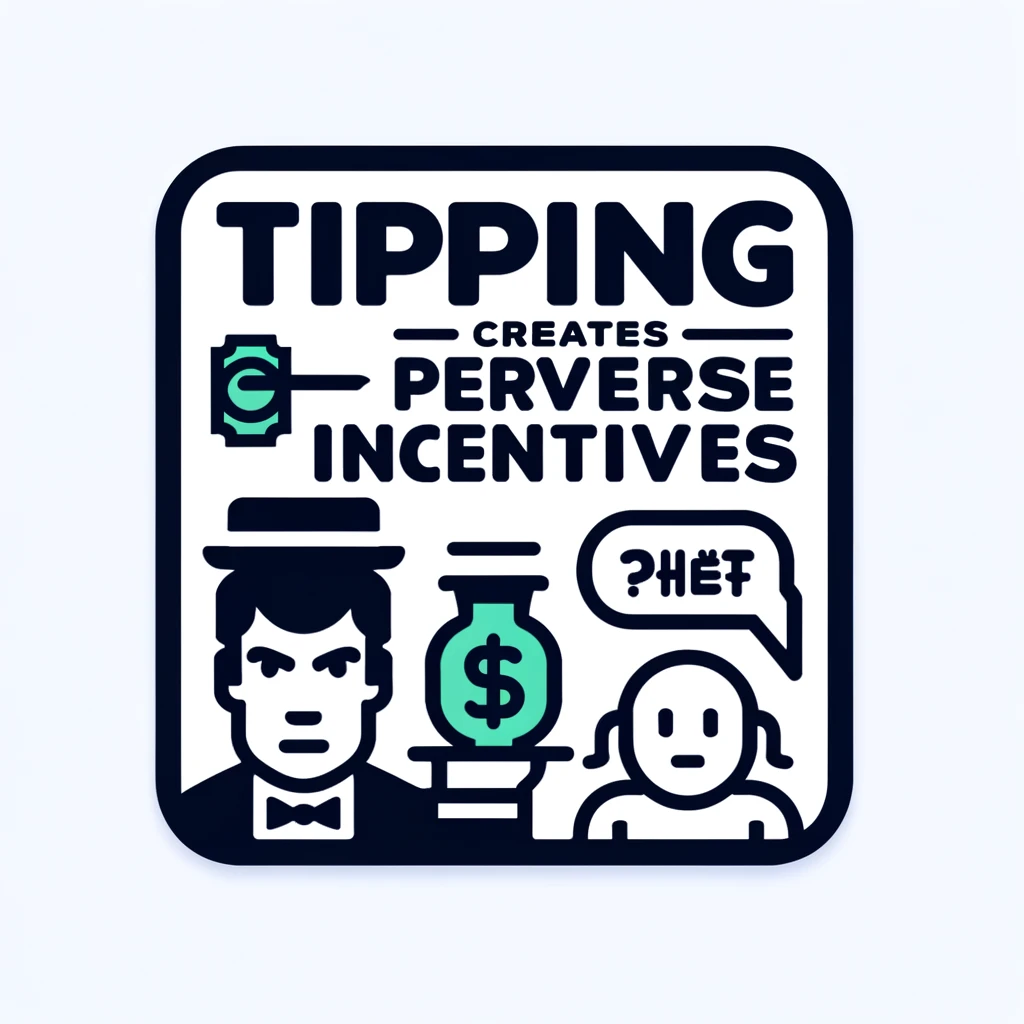
Compulsory Tipping Drives Perverse incentives
A restaurateur might judge their “best” staff not on the quality of the service they provide, but by who makes them the most money from each guest. When guests are obliged to tip as a percentage on a bill, the incentive is there for a server to maximize the value of that bill to gain a larger tip for themselves. Yes, we are for-profit businesses, and financial pressures require us to maximize our earnings or we won’t stay in business very long, but the standard tipping model can cause staff to go too far.
Servers and bartenders are often compelled to use deceptive and sometimes dangerous tactics to maximize guest alcohol intake and “loosen up” their spending decisions. For example, a server might be quick to get drinks in guest’s hands as they arrive, but then withhold menus and food ordering long enough to get guests tipsy, all so they will more be more impulsive when asked about upsells.
Reflexively offering “one for the road” shots whenever a bar guest asks for their bill at some of our tip-expected competitors is common and encouraged by management there (attested by former managers at those establishments). While we literally make our own alcohol and love to share it with our guests, we really do believe in fostering responsible social drinking, and we take our duty of care towards our guests and the surrounding community seriously. While onboarding experienced front of house team members from other establishments, we frequently receive comments like, “Really? Nowhere else that I’ve ever worked has cared about this”, which breaks our hearts, but it all goes back to the tip-based approach of restaurants and bars today. So clearly, the tip-expected mindset has caused restaurant teams to do some shady things. This is another aspect of unnecessary legal exposures that restaurants and bars are regularly opening themselves up to in worship of the almighty tip.
Are There Downsides to Tip Optional Service?
It wouldn’t be fair to get on our high horse and tell you about all the things we like about our model, without also talking about the challenges it presents, which any restaurateur who might be considering making the switch should be aware of.
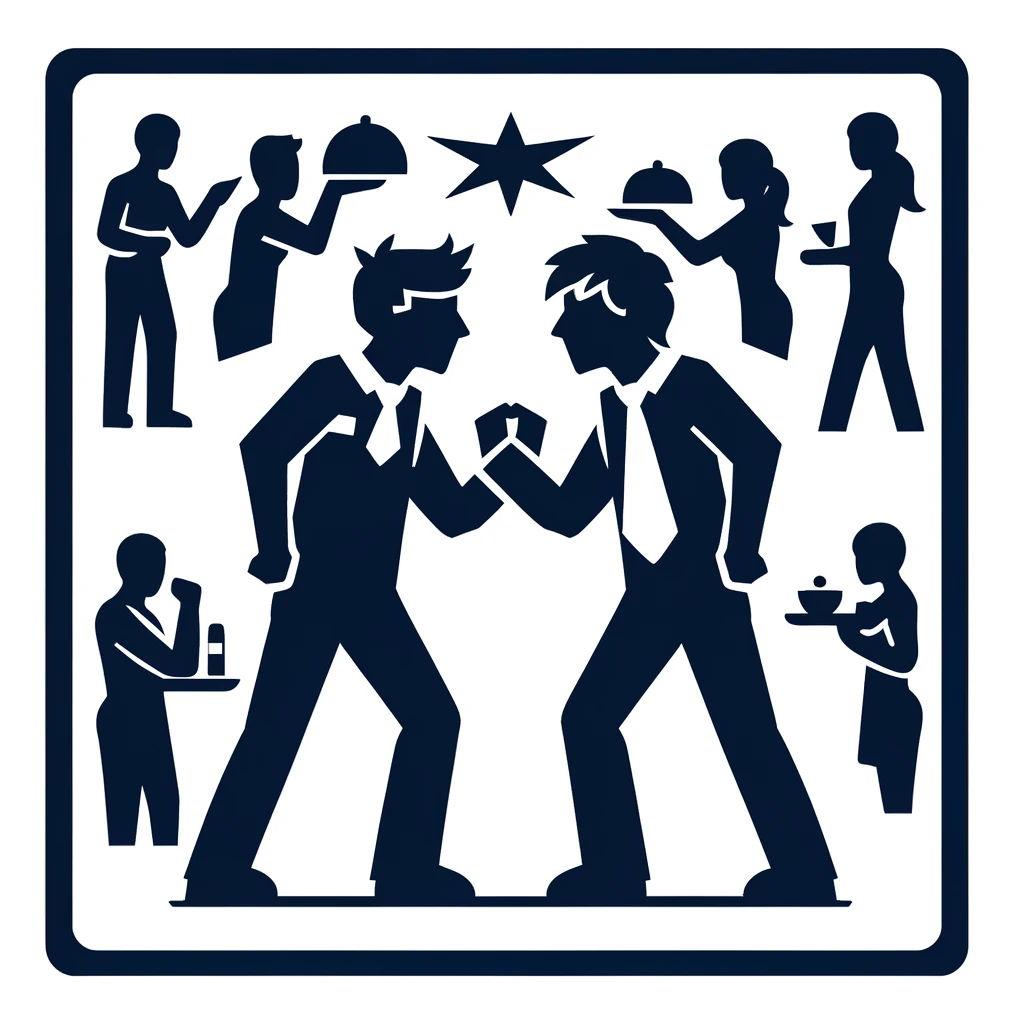
Fighting Preconceived Notions About Tips
The hardest thing about operating with a tip optional model is having to constantly operate in conflict with people’s biases about tipping. Both the tradition and popularity of tipping in our culture have led to the false narrative described earlier, and anytime that narrative is challenged, a lot of people simply resort to using logical fallacies to make their arguments (eg. appeal to popularity – if everyone else is doing it, it must be the right/best way).
As we discussed earlier, our philosophy is usually the first thing people blame for all of our shortcomings and failures, simply because it is “different” from what they know. It can be exhausting having to educate our guests, staff and community about this.
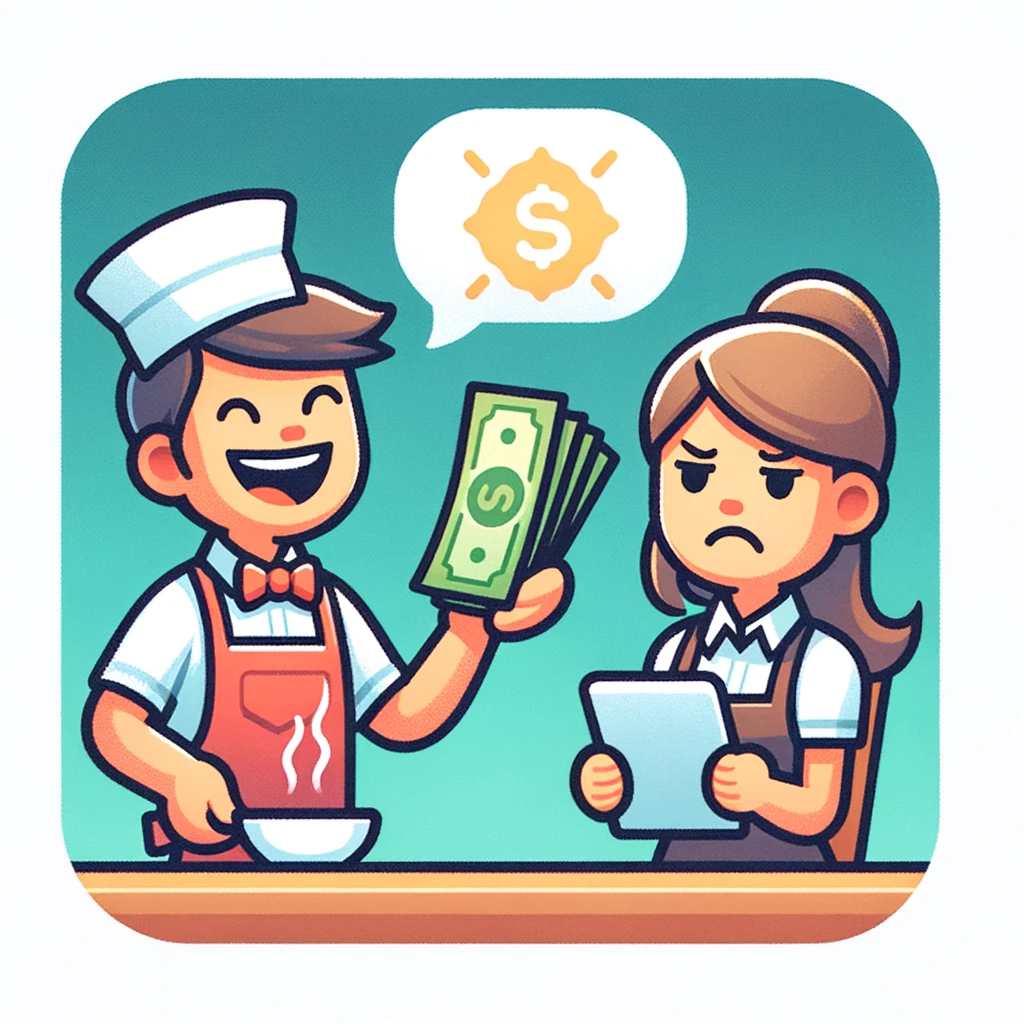
Team Wages and the Over-Generalization Bias
When working in the service industry, people tend to remember occasions like that one night when they got a massive tip from a wealthy table and went home with what was normally a week’s worth of tips in one day. Over time, this creates a long-enough string of memories that tip-earners start to overgeneralize (and overestimate) their take-home pay as tips, often biasing towards higher values than would be the outcome if they accurately tracked their tips and hours spent at work, including the unpaid hours waiting for their tips or being benched because business was slow. People in the industry often brag about their tips to their friends and family. People who have worked in the industry for a long time learn to take these boasts with a grain of salt, but people new to the industry are easily swayed and/or misled when they hear these kinds of numbers from their friends or new coworkers, which might cause them to jump to other jobs or grow disgruntled.
Our team members are often subjected to this kind of bragging of half-truths from members of our industry, and we have lost good people simply because they were misled to believe that they could earn a great deal more in tip-expected restaurants than they do at Prairie Dog Brewing, though we often find out later that they left that job quickly because their expectations weren’t met. Whether at a tip-expected establishment or not, patrons are only willing to pay so much for food and beverages, and all business is a zero-sum game, so if any staff member is making a great deal more money at a different restaurant with similar menu prices to our own, it has to be at the expense of something else, like the wages of non-service staff, a lack of health and wellness benefits, or a lack of food quality/safety for the guests at those establishments.
